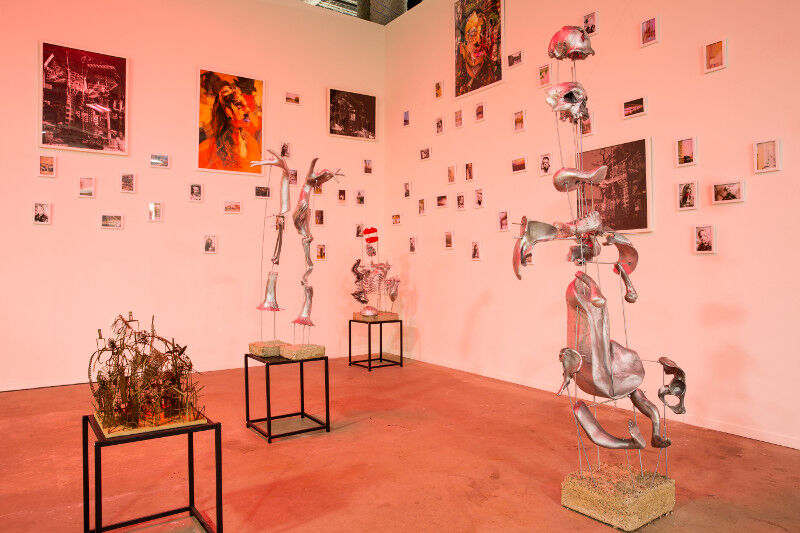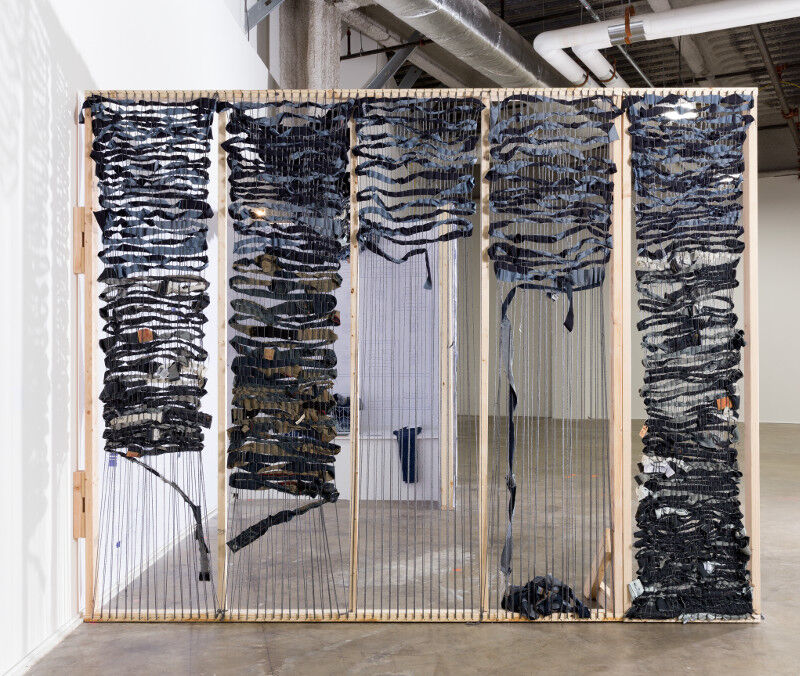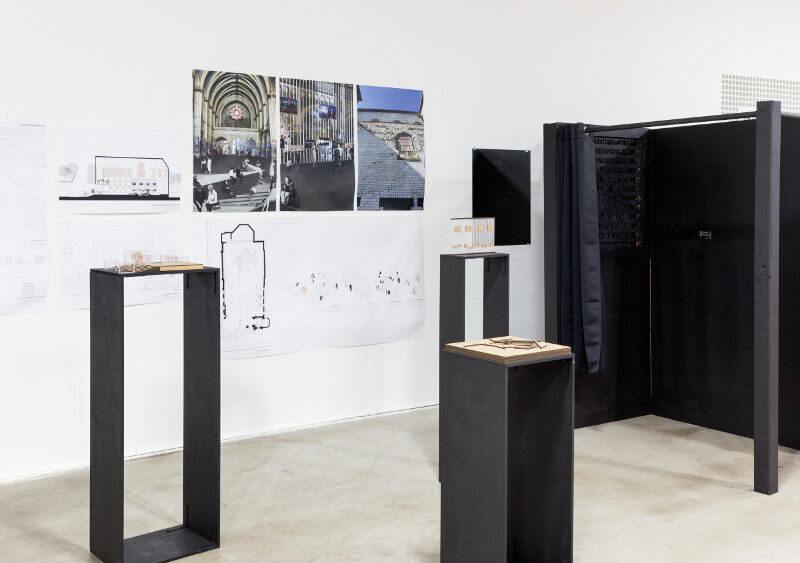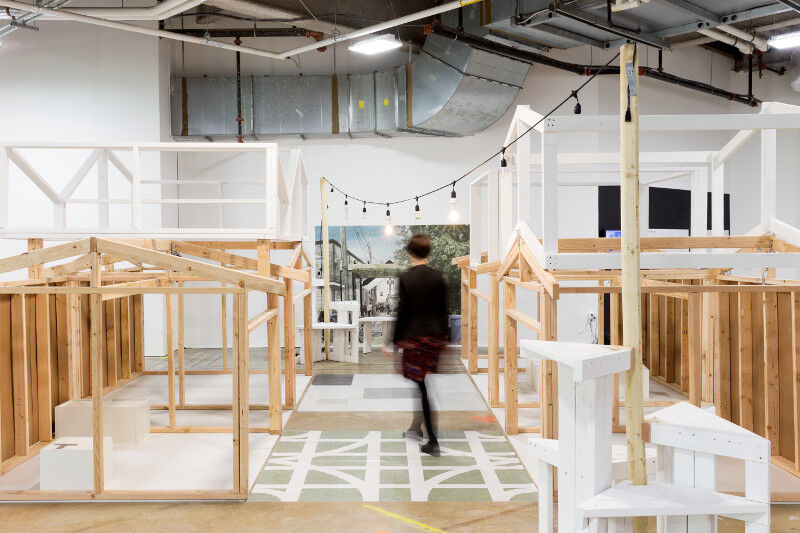
Lost Arts (2017)
Working with Lost Arts, a Chicago co-working community, 2017 Masters Thesis Students in Architecture and Interior Architecture made use of equipment and expertise from the city's creative community to develop their research into immersive installations for the Department's Design Show 2017 at Block 37 in Downtown Chicago.
In a diverse range of projects that utilized skills in areas from carpentry to 3D printing to textiles, Lost Arts gave students access to an expanded network of professional experience and expertise to support their work.

Sarah Muzammil Aziz (MArch 2017)
When visiting my family homes in England and Pakistan over the winter break, I was both shocked and saddened by how much these familiar places had become displaced by time, memory, and experience - notions that I take for granted, and this became the start of my thesis - the act of preserving the in effable. These diagrammatic perambulations of my family’s dwellings becomes a form of social cartography that allows for me peer into the vast and uncanny world of their communal and individual architectural imagination. In order to visualize these perpetually altering, and fragmenting landscapes, where time and place conflate into a single moment, I will be using several temporal registers that allow for the simultaneity of all of these conditions to exist at once…overlaid and deconstructed drawings of The Building, stroboscopic models of banal / sacred anachronistic architectural objects and three-dimensional cubist paintings. See more of Sarah's work here.

Kim Jean Arciniega (MArch IA 2017)
"Jeanealogies: Denim’s Spatial Metabolisms" explores the role of architecture as a discursive practice by examining the lives of our used denim in our built environment. Architecture plays an active role in the processes and dispersion of industry where it either conceals or reveals industry’s networks and consequences. The thesis propels a reassessment of our relationship to clothing waste focusing on the denim industry as a case study. The denim industry serves as crucial focus to be able to integrate denim’s cultural material properties into a visible discussion about waste, empathy, and culture. Responding to the current political climate, the appeal for the return of industry back to the United States, and the consequences of used clothing and waste exports, this thesis reevaluates our relationship to both denim and waste by tapping into these histories and offering future spatial formulations. See more of Kim's work here.

Emma Camilleri (MArch IA 2017)
Churches are continuously closing due to shifts in religious devotion and forms of worship through collective gathering; abandoned churches provide an interesting forum with which to begin to redefine the collective gathering spaces. Their historic architecture compliments the notion of remembering and provides unique opportunities of slight mimicry and adaption to engage in memory by recording and archiving these moments. Rethinking the adaption of abandoned religious structures and their succession of spaces within, for example, the confessional, has the potential to redirect and influence current approaches of development such as the adaption of these deserted sites into high-end condominiums. The “program” lends itself to further adaption of the traditional practices of the catholic church, such as the confessional, communal gathering, and song/prayer. Reconceptualization of these practices that bring individuals together and allow individuals to feel untied, connected, and expressive, have immense potential for the new “memorial” concept. Furthermore, utilizing existing buildings, the new “memorial” contributes to the sustainable future of design. See more of Emma's work here.

Kate Barbaria (MArch 2017)
This thesis is an exploration of current and future stakes of conservationism and land management practices in the United States, and a series of inquiries on the relationship between the human and the non-human. The thesis takes the form of a design fiction--sited in the United States in the not- so-distant future, featuring a band of vigilante conservationists who travel across the country, maintaining open corridors for wildlife migration between eight major territories of American biodiversity. The resulting production of tools, maps, vehicles, and other artifacts for this future community are a meditation and a commentary on the current tenuous state of biodiversity and humanity’s distorted relationship to the land, more than a “solution” or a fantasy. The intent of the this architectural thesis, as with all projective fiction, is to create a confrontation with the motivations, tools, and protocols of a a future group of people who have decided to actively preserve the biodiversity of the United States, without waiting for systemic change or governmental facilitation. See more of Kate's work here.

Matthew Hamaker (MArch 2017)
While streets and sidewalks make up 80% of public space in most cities, alleys are often ignored and underutilized. Originally used for delivery, horse stables, and storage. Many alleys no longer serve these functions and are underutilized. Although overlooked, many people network alleys as circulation through dense urban areas. Today, new social concepts within the network of alleys can attract public interaction using the mediums of light, sound, furniture, art and pop-up structures. Alleys offer endless possibility for new types of public space. With the implementation of new forms of collective space, people can start to reimagine Logan Square’s alleys as an informal parallel to the street out front. The idea of public property and private property within an alley is incredibly sensitive. With the introduction of social concepts and new material finishes within the alley the sensitivity of public and private space can begin to merge. See more of Matthew's work here.
